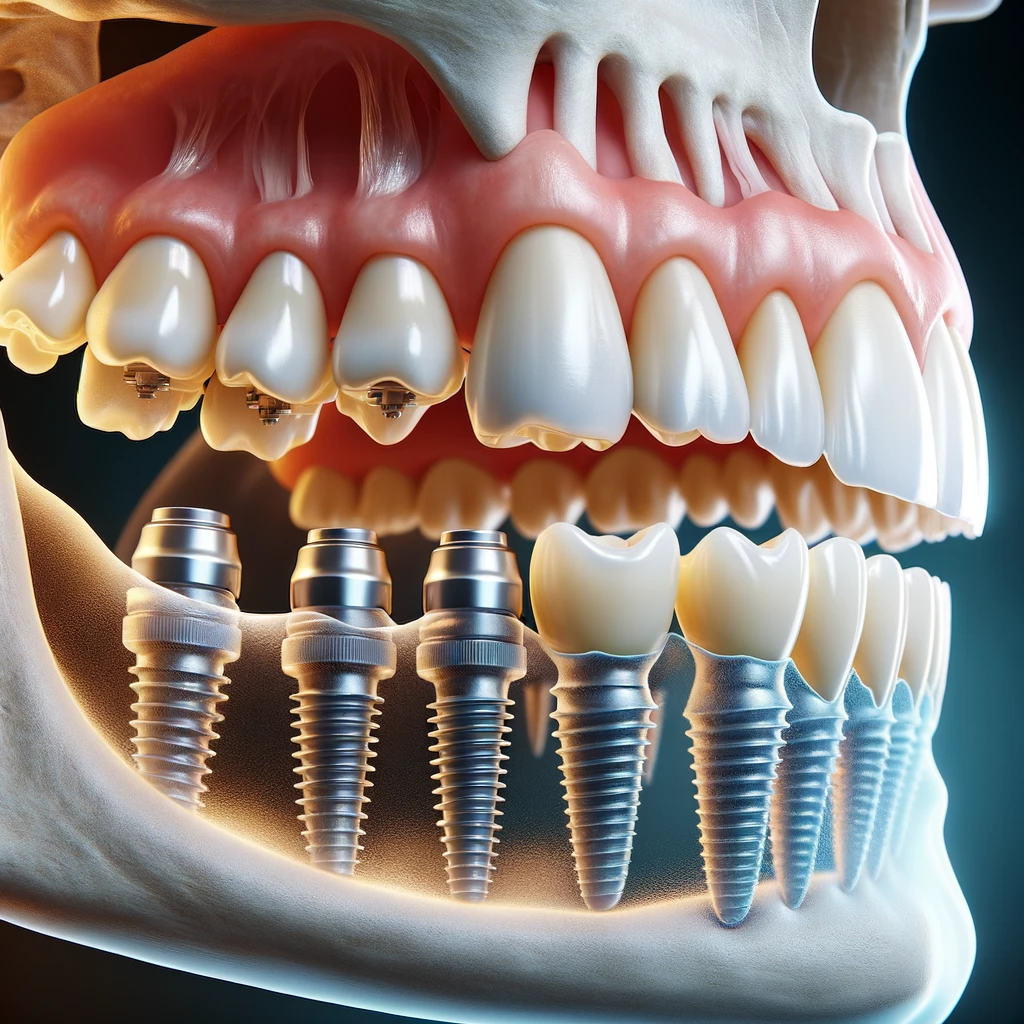The smart Trick of Dental Sense That Nobody is Talking About
Table of ContentsA Biased View of Dental SenseExamine This Report on Dental SenseLittle Known Facts About Dental Sense.What Does Dental Sense Do?
are medical devices surgically implanted into the jaw to restore a person's capability to eat or their appearance. They offer assistance for fabricated (fake) teeth, such as crowns, bridges, or dentures. When a tooth is lost as a result of injury or condition, a person can experience difficulties such as fast bone loss, malfunctioning speech, or adjustments to eating patterns that result in discomfort.Oral dental implant systems consist of an oral implant body and dental implant abutment and might also include a joint fixation screw. Cosmetic dentistry services. The dental implant body is surgically inserted in the jawbone instead of the tooth's origin. The oral implant joint is generally affixed to the dental implant body by the joint addiction screw and extends via periodontals right into the mouth to support the attached man-made teeth
(https://penzu.com/p/6de5c74cda18cc8f)Framework of The Oral Implant System selecting oral implants, speak with your dental provider regarding the prospective advantages and dangers, and whether you are a candidate for the procedure. Points to consider: Your overall health and wellness is a crucial factor in identifying whether you are a good prospect for dental implants, how long it will certainly take to recover, and for how long the implant might stay in place.
Cigarette smoking may influence the recovery procedure and lower the lasting success of the dental implant. The healing procedure for the dental implant body might take several months or longer, during which time you usually have a short-lived joint instead of the tooth. the dental implant procedure: Thoroughly follow the dental health instructions provided to you by your dental service provider.
The Basic Principles Of Dental Sense
Implant failing can result in the need for another surgical treatment to repair or replace the implant system. Recovers the ability to eat Restores cosmetic appearance Helps keep the jawbone from reducing because of bone loss Protects the health of the bordering bone and gums Aids maintain nearby (close-by) teeth stable Boosts lifestyle Damage to bordering all-natural teeth throughout implant positioning Injury to the surrounding tissues during surgery, such as sinus opening Injury during surgery (as an example, crack of bordering jawbone) Poor feature, such as seeming like the teeth do not bite with each other typically A sensation that the tooth is loosened or twisting in area resulting from an abutment screw loosening Implant body failure (looseness of the dental implant body) due to systemic infection, which may be a lot more likely in clients with unrestrained diabetes due to local infection in bone and periodontals supporting the dental implant body as a result of delayed healing, which may be extra most likely in clients who smoke Difficulty cleaning the gum tissues around the implant, leading to poor dental hygiene Without treatment gum disease Post-surgical feeling numb as a result of nerve impingement or damage Constantly alert health treatment suppliers and imaging specialists that you have dental implants prior to any kind of magnetic resonance imaging (MRI) or x-ray treatments.
FDA is not knowledgeable about any kind of unfavorable occasions reported for MRI or x-ray procedures with oral implants. Dental implants systems are generally constructed from products that adhere to international consensus standards of the International Company for Standardization (ISO) or ASTM International. These standards have information of what makes a risk-free product.

An oral implant is a framework that replaces a missing out on tooth. With screw-like gadgets, the surgeon inserts an implant right into the jawbone, and it functions as a support for a fabricated tooth, called a crown. A device called an abutment links the man-made tooth to the dental implant. The crown is tailor-made to fit the individual's mouth and match the shade of their teeth.
Rumored Buzz on Dental Sense
Some people are not eligible for oral implant surgical procedure. It is for dental cosmetic surgeons to operate on individuals with: acute illnessuncontrollable metabolic diseasebone or soft tissue disease or infectionIf these issues are solved, an individual can have the surgical treatment. In, dental doctors abstain from running on individuals with: If individuals with any one of the above go through dental implant surgical treatment, there is a greater risk of the dental implant stopping working.

Dental implant surgical treatment is a customized procedure. It's not the same for every person. The adhering to gives a general overview of what you can expect your dental practitioner, oral doctor, periodontist or prosthodontist to do: Put the dental implant operatively. Offer you time to heal. Affix the blog post and final crown, bridge or denture.
Next off, your cosmetic surgeon will meticulously place the oral implant into your jaw. Your doctor will certainly reposition your gums and shut the laceration with stitches. If your implant is near the front of your mouth, your dental best site expert will certainly make a temporary tooth for you to put on till you heal. This way, you will not have a gap in your smile while you recoup.
Not known Details About Dental Sense
Your company can tell you what to expect in your circumstance. During the healing stage, your jawbone ought to fuse to the oral implant. This process, called osseointegration, is critical for stability and long-lasting success. This procedure can take anywhere from 3 to 9 months. Sometimes, it might take much longer.
Once your implant heals, your dentist can attach the joint (small connector blog post) and your final restoration (crown, bridge or denture). This usually takes regarding one hour to finish and might call for a second minor surgical treatment. You should not feel any type of pain during your oral implant procedure due to the fact that your supplier will make use of drug to numb your gum tissues.